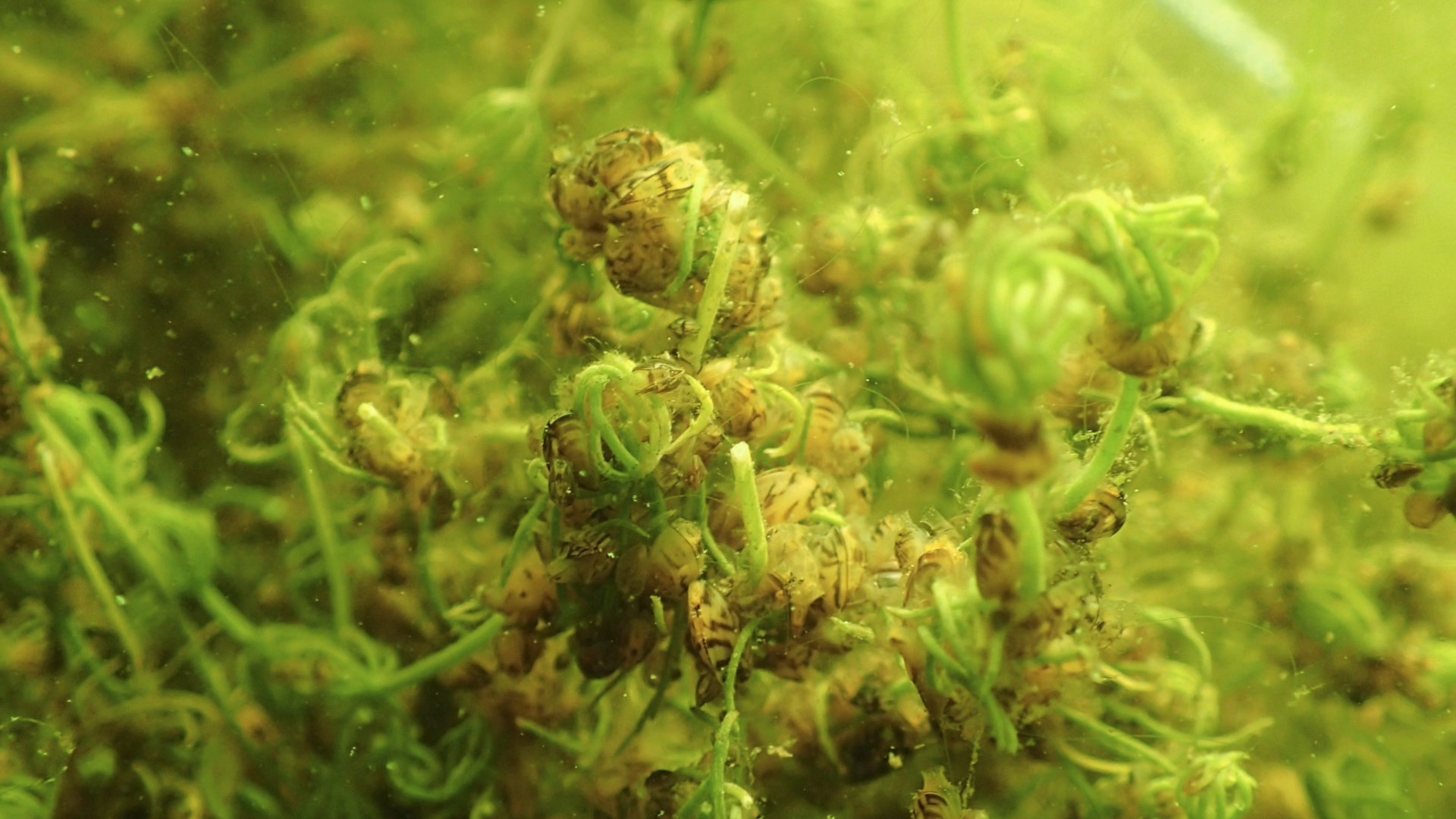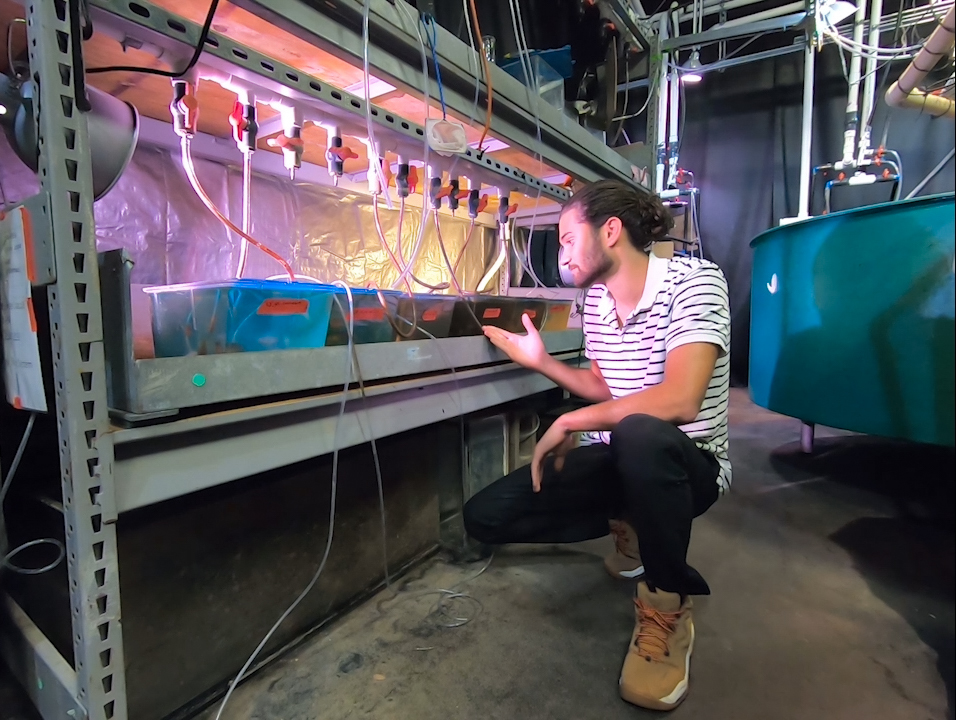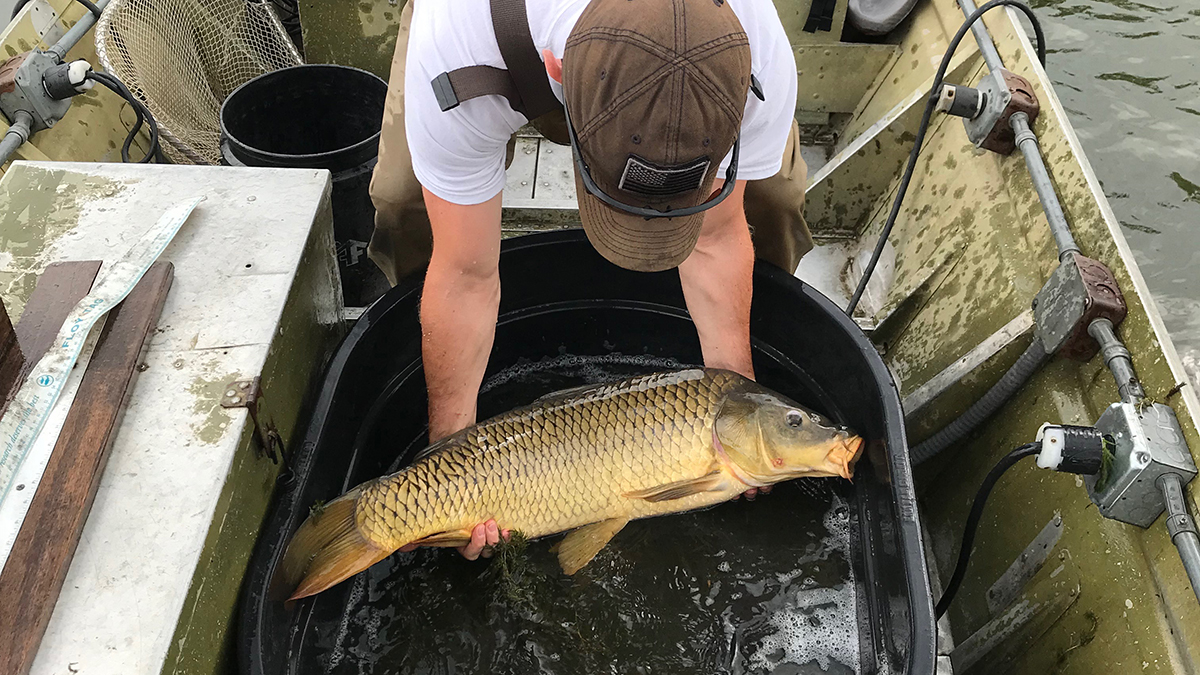MAISRC Projects Launching in 2022
 |
Phase III: Validating Multibeam Sonar for Early Detection of Zebra Mussels This project is a continuation of a laboratory study, Phase I, and a field study, Phase II, to test the feasibility of detection and mapping of mussels and their supporting substrates from a moving vessel using multibeam sonar. Phase III will apply the methods developed in Phases I and II to 1) create maps of substrate and relative mussel densities in two different water bodies at a large scale (~0.5 km 2 ) and 2) develop user-ready protocols and tools for translation of the research results to practice. Learn more about this project > |
 |
Phase III: Genetic Control of Invasive Fish Species This project focuses on a novel method of biocontrol for common carp that will complement existing technologies by introducing a synthetic species-like barrier to reproduction. In Phase III, researchers will test implantation of immature primordial germ cells and embryonic stem cells into the gametes of sterile adult fish as a means to bypass the 12- to 18-month developmental time for juvenile carp. Researchers will also perform a formal Technology Readiness Assessment with international stakeholder research groups. Learn more about this project > |
 |
Phase IV: Acoustic Conditioning in Common Carp to Accelerate Removal and Reduce Cost Researchers will test if the invasive common carp can be conditioned (trained) to associate sound with bait so that more of them aggregate at the bait and from larger areas to enhance physical removal strategies. There is a need for effective, safe, selective and scalable technologies for removing common carp from lakes. Currently, simple bait- and-remove strategies can remove 20-40% of carp in one season. However, the efficacy of these strategies may be significantly increased by using acoustic conditioning to ensure that carp aggregations at the bait are more synchronized and that more carp are attracted to the bait from larger areas. Learn more about this project > |
Cattail Webinar Jan. 27
Learn why cattails are so abundant along Minnesota shorelines, how they impact our lakes, and all about our current cattail research. More info >
AIS Management 101
The fully online course is back for 2022! Registration will open in January. Learn more about the course >
Request for Proposals
Coming soon! Keep an eye on your inbox for MAISRC's official Request for Proposals launching Jan. 3, 2022. We can't wait to see your new ideas!
Recent Publications
An ensonified bubble curtain blocks 4 species of invasive carp in a laboratory flume but also deters other fish, while sound alone is less effective overall and does not target carp. Biological Invasions. Jane R. Feely and Peter Sorensen.
- A key finding: The ensonified bubble curtain blocked all four carps 92-97% of the time without habituation, but five native fish were also partially blocked. In contrast, sound alone only blocked 2 carps and affected the other fishes in ways not related to their hearing abilities.
Optimizing the location of watercraft inspection stations to slow the spread of aquatic invasive species. Biological Invasions. Robert G. Haight, Amy C. Kinsley, Szu-Yu Kao, Denys Yemshanov, Nicholas B. D. Phelps.
- A key finding: To facilitate program design, the study developed an integer programming model for allocation of scarce inspection resources among lakes. The model uses species-specific infestation status of lakes and estimates of boat movement between lakes.
Funding for MAISRC is provided by:



